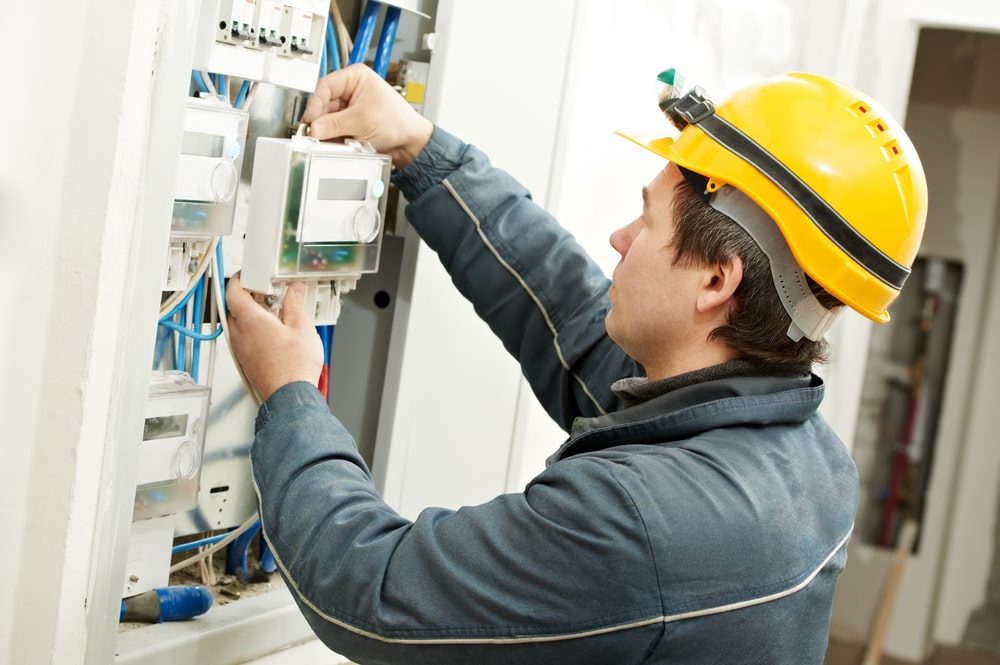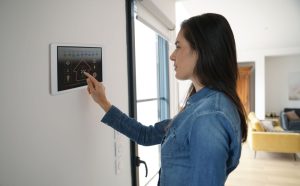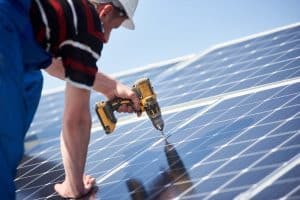Home > Energy Plans > Understanding Electricity Meters
Understanding Electricity Meters
Find out how to understand and read electricity meters, and the different types of meters you may encounter in Australia with this guide from Savvy
Author
Savvy Editorial TeamFact checked

Electricity meters are devices that measure the amount of electricity consumed in your home. They play a crucial role in monitoring your energy usage and ensuring accurate billing. In this guide, we'll break down the basics of electricity meters, explain how to read them, and provide useful tips to help you track and manage your energy consumption effectively.
What are electricity meters, and how do they work?
Electricity meters, also called energy meters or utility meters, are gadgets installed by energy companies to measure how much electricity you use. They're usually found near your main electrical panel or in a special meter box located near the front of your home or business.
Each meter has a unique meter number and identification number. This is referred to as an NMI (National Meter Identifier). Your meter number/identification number is usually listed on the second or third page of your electricity bill.
How do electricity meters work?
Electricity meters work by measuring the flow of electrical current and voltage. Regardless of the meter type you have, they measure the amount of electricity you use in watts, which is then converted to kilowatt-hours. A watt is the result of multiplying voltage (volts) by current (amperes), representing the electrical potential.
However, to measure actual energy usage, you need to consider the element of time. All electricity usage is measured in kilowatt-hours (kWh). This accounts for the watts used over a specific time period. For instance, if you have a 100-watt light bulb turned on for 10 hours, the energy usage would be calculated as 100 watts x 10 hours = 1,000 watt-hours, or 1 kilowatt-hour (1 kWh).
Here's a more detailed explanation of the process:
- Current measurement: The meter measures the electric current flowing through your property's electrical system. It uses current transformers to convert the current into a proportional voltage.
- Voltage measurement: The meter also measures the voltage of the electricity supply. This is typically done using voltage transformers or directly from the mains electricity supply.
- Calculating energy consumption: By multiplying the measured current and voltage, the meter calculates the instantaneous power consumption. It then integrates this power consumption over time to determine the total energy consumed in kilowatt-hours (kWh).
- Data recording: The meter records this energy consumption data, which can then be accessed either by a meter reader, or sent directly to your energy provider without the need for a physical meter reading.
How do I know what sort of electricity meter I have?
There are several different types of electricity meters. Here’s how to identify the main types of meters used in Australia:
Analog meters (also known as clock face meters)
Analog meters have rotating dials or a spinning disc to measure your energy consumption. These meters provide a visual representation of your usage. These meters usually have five round dials which look a bit like clock faces. However, instead of having the numbers 1 – 12 on them, they go from 0 – 9, and only have one hand or indicator which will point to a particular number.
Digital meters
Instead of having clock-type faces, digital meters have a row of numbers on an electronic display panel providing a digital readout of kilowatt-hours (kWh) consumed. With digital meters, it is sometimes necessary to press the ‘display’ button to see the numbers, which light up when the display button is pressed.
Smart meters
Smart meters usually have a larger display panel which can show you many different types of information. They can display not only figures, but sometimes usage graphs too, depending on whether your meter is linked to a solar energy system or not. There will usually be at least one display button to press, which can help you see the information you require. You may have to press this button several times to scroll through different display modes. They measure your energy consumption in kWh and often offer real-time usage data, remote monitoring, and two-way communication with your energy provider.
For more information on how your smart meter works, read the written instructions that came with your smart meter, or contract your electricity distributor if you require further information.
The advantage of smart meters is that they can provide information about the time of day that electricity is used. This enables electricity retailers to offer time-of-use tariffs, which charge a different price for electricity depending on whether it’s used during peak, off-peak or shoulder use periods. By comparing different energy plans which offer time-of-use tariffs, it’s possible to alter your consumption habits to take advantage of cheaper electricity rates.
How do I read my electricity meter?
To give your electricity provider a meter reading, you will need to provide five numbers. To read an analog electricity meter, start with the number on the far left dial inside the meter, and read each face in turn towards the far right face. Write down each number in order from left to right to give you the five required numbers.
It’s important to remember that if the dial is in between two numbers, the reading should be recorded as the smaller of the two numbers. For instance, if the dial is between three and four, the reading would be recorded as a three.
When you look at the five dials on an analog electricity meter, the first, third, and fifth dial numbers run in a clockwise direction, while the second and fourth dials run counterclockwise.
Reading a digital meter or a smart meter is easier, as the required numbers are displayed in one panel. If you are not sure that you are reading the correct numbers, contact your electricity retailer for assistance.
Helpful energy guides
Compare energy plans
Disclaimer:
Savvy is partnered with Econnex Comparison (CIMET Sales Pty Ltd, ABN 72 620 395 726) to provide readers with a variety of energy plans to compare. We do not compare all retailers in the market, or all plans offered by all retailers. Savvy earns a commission from Econnex each time a customer buys an energy plan via our website. We don’t arrange for products to be purchased directly, as all purchases are conducted via Econnex.
Any advice presented above is general in nature and doesn’t consider your personal or business objectives, needs or finances. It’s always important to consider whether advice is suitable for you before purchasing an energy plan. For further information on the variety of energy plans compared by Econnex, or how their business works, you can visit their website.










